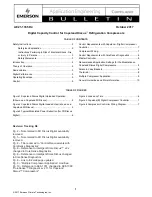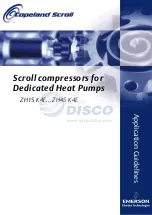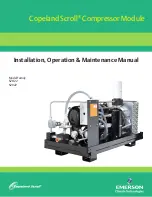
28
A-10
Symptom:
What it may indicate:
What you should do:
(g) Restricted air inlet (not enough air
to compressor).
Check the compressor air inlet line for
restrictions, brittleness, soft or sagging hose
conditions etc. Repair as necessary. Refer
to vehicle manufacturer’s guidelines for inlet
line size.
Check the engine air filter and service if
necessary (if possible, check the air filter
usage indicator).
(i) Compressor malfunction.
Replace the compressor only after making
certain that none of the preceding conditions,
9.0 (a) through 9.0 (h), exist.
(h) Poorly filtered inlet air (poor air
quality to compressor).
Check for leaking, damaged or defective
compressor air inlet components (e.g.
induction line, fittings, gaskets, filter bodies,
etc.). Repair the inlet components as
needed. Note: Dirt ingestion will damage
the compressor and is not covered under
warranty.
9.0 Air brake
charging system
seems slow to
build pressure.
(continued)
(f) Restricted discharge line.
If discharge line is restricted:
By more than 1/16" carbon build-up,
replace the discharge line (see Table A,
column 2, on page A-3 for recommended
size) and go to Test 3 on page A-14.
By other restrictions (e.g. kinks).
Replace the discharge line. See Table A,
column 2, on page A-3 for recommended
size. Re-test for air build. Return the vehi-
cle to service or, if the problem persists, go
to 9.0(a).
The the discharge line must maintain a
constant slope
down from the compressor
to the air dryer inlet fitting to avoid low points
where ice may form and block the flow. If,
instead, ice blockages occur at the air dryer
inlet, insulation may be added here, or if
the inlet fitting is a typical 90° fitting, it may
be changed to a straight or 45° fitting. For
more information on how to help prevent
discharge line freeze-ups, see Bendix
Bulletins TCH-008-021 and TCH-008-022
(Appendix B). Shorter discharge line
lengths or insulation may be required in cold
climates.
Kinked discharge line shown.
Dash gauges.
Partly collapsed
inlet line shown.
(f)
(g)
Engine Oil Quality
Inadequate oil change intervals, the formulation of the
oil and/or the quality of oil filter used can all lead to poor
oil quality. These can increase the rate at which carbon
builds up in the discharge line. Bendix recommends oil
soot (solids) be maintained at less than 3%.














































